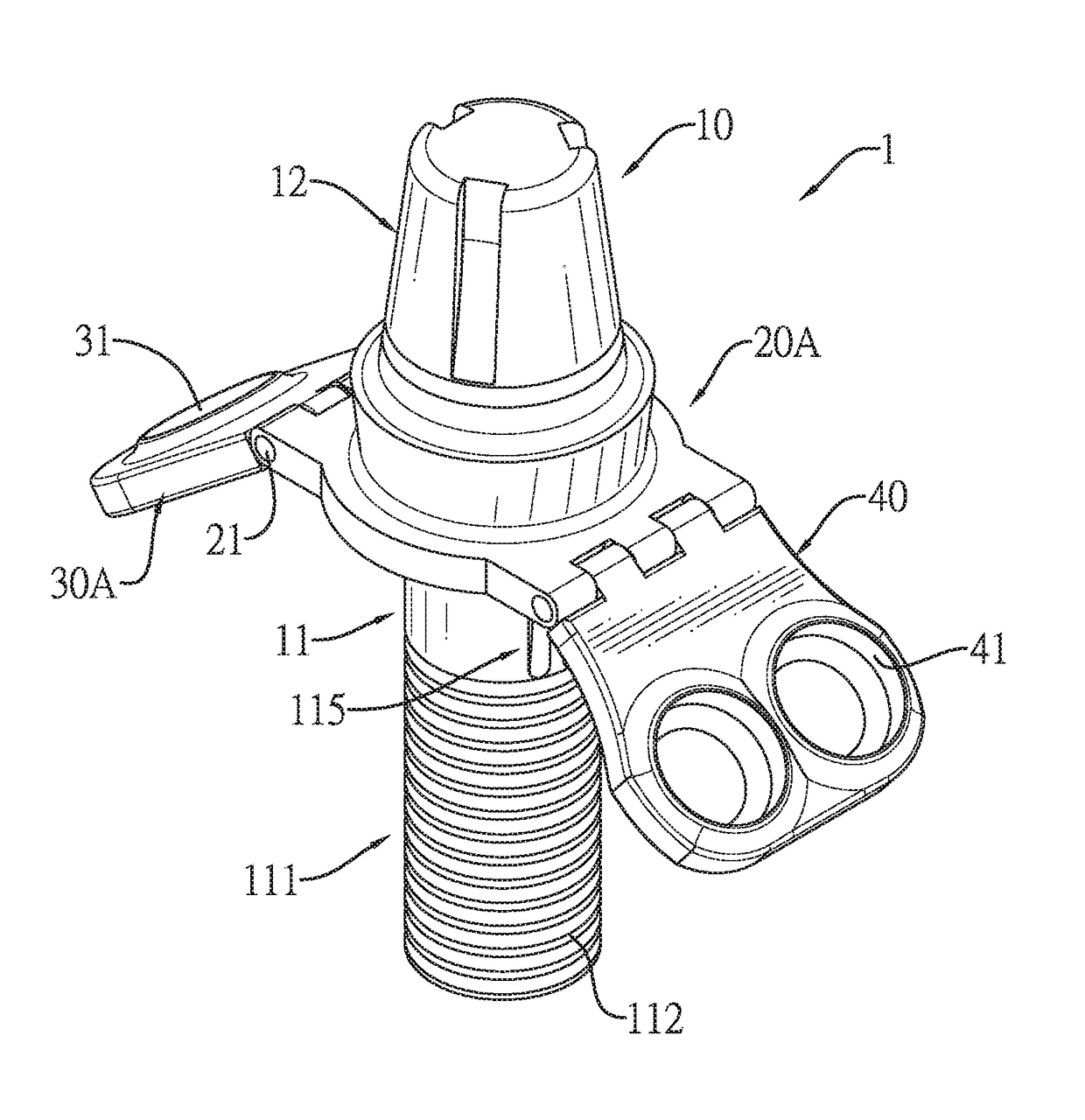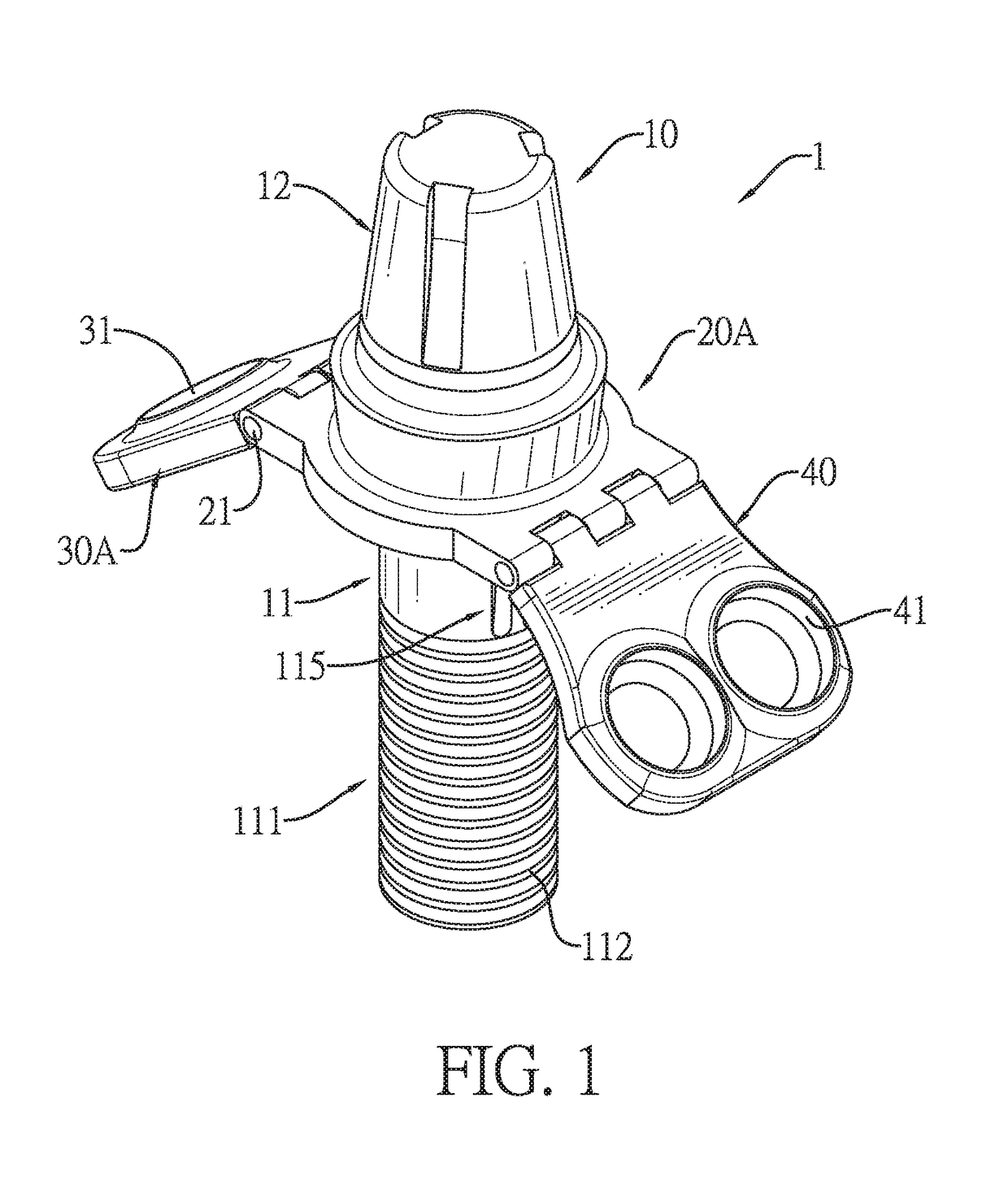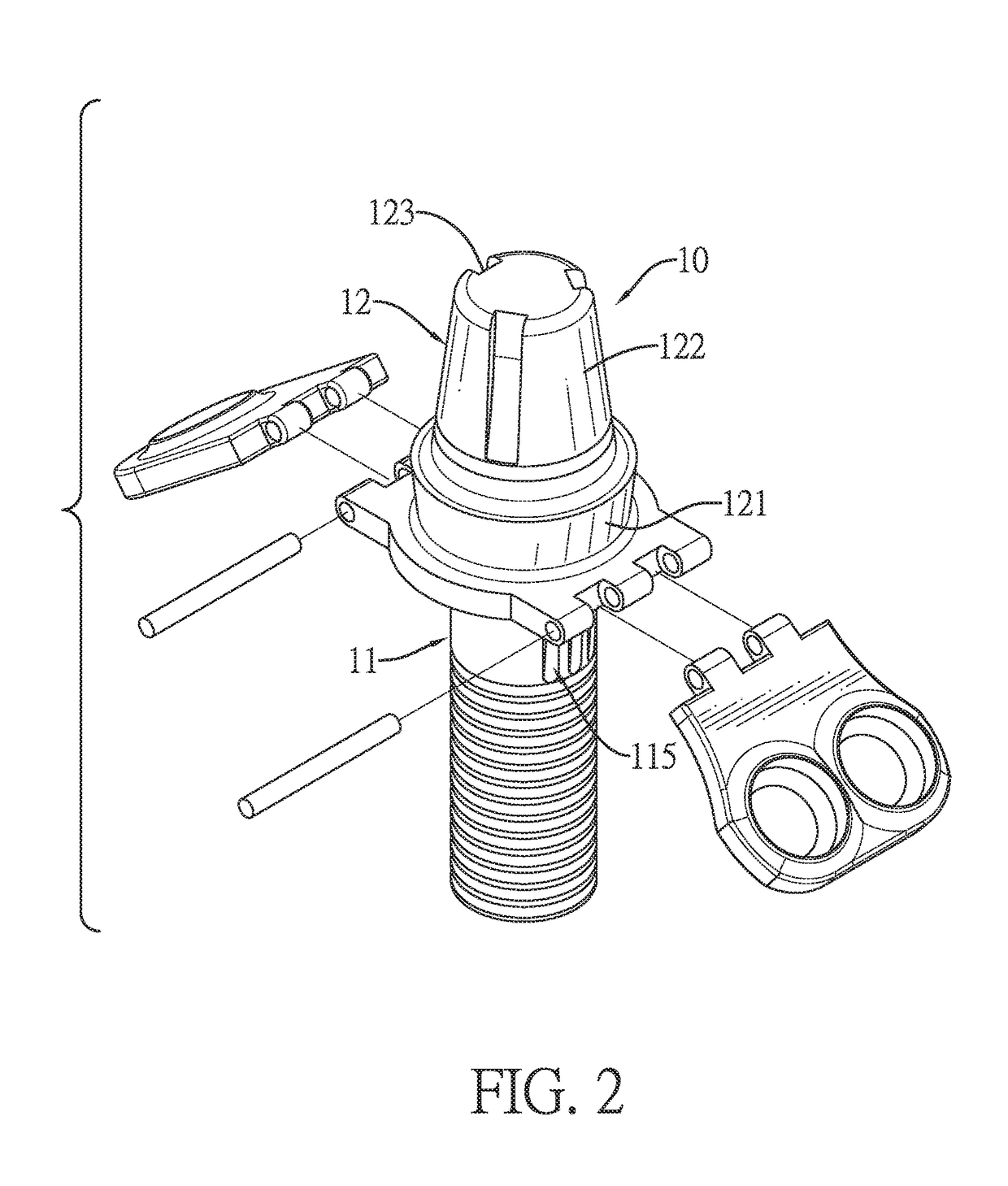Adjustable dental implant
a dental implant and adjustable technology, applied in dental implants, dental surgery, medical science, etc., can solve the problems of unsatisfactory osseointegration, dental implant cannot be firmly integrated with alveolar bone, and failure of dental implant surgery, so as to avoid rapid reconstruction of elders' occlusion, and the effect of avoiding loosening and displacement of bone grafts
- Summary
- Abstract
- Description
- Claims
- Application Information
AI Technical Summary
Benefits of technology
Problems solved by technology
Method used
Image
Examples
Embodiment Construction
[0037]Several embodiments, the first to fifth embodiments, of the adjustable dental implant of the present invention are respectively demonstrated in FIGS. 1, 4, 7, 9, and 11. In each of the embodiments, the adjustable dental implant comprises an implant body 10, a connecting structure 20A, 20B, 20C, 20D, and two wings 30A, 30B, 40. The two wings are a first wing 30A (as shown in FIGS. 1, 4, 9, and 11), 30B (as shown in FIG. 7) and a second wing 40.
[0038]With reference to FIGS. 1, 4, 7, 9, and 11, the implant body 10 comprises a fixture 11 and an abutment 12. The fixture 11 may be implanted in the alveolar bone for osseointegration. The length of the fixture 11 can be modified depending on needs. The fixture 11 comprises a top, a bottom, and a peripheral surface connected between the top and the bottom. The abutment 12 is formed on the top of the fixture 11 for allowing a dental crown mounted thereon.
[0039]With reference to FIGS. 1, 4, 7, 9, and 11, the fixture 11 comprises a joinin...
PUM
 Login to View More
Login to View More Abstract
Description
Claims
Application Information
 Login to View More
Login to View More - R&D
- Intellectual Property
- Life Sciences
- Materials
- Tech Scout
- Unparalleled Data Quality
- Higher Quality Content
- 60% Fewer Hallucinations
Browse by: Latest US Patents, China's latest patents, Technical Efficacy Thesaurus, Application Domain, Technology Topic, Popular Technical Reports.
© 2025 PatSnap. All rights reserved.Legal|Privacy policy|Modern Slavery Act Transparency Statement|Sitemap|About US| Contact US: help@patsnap.com



